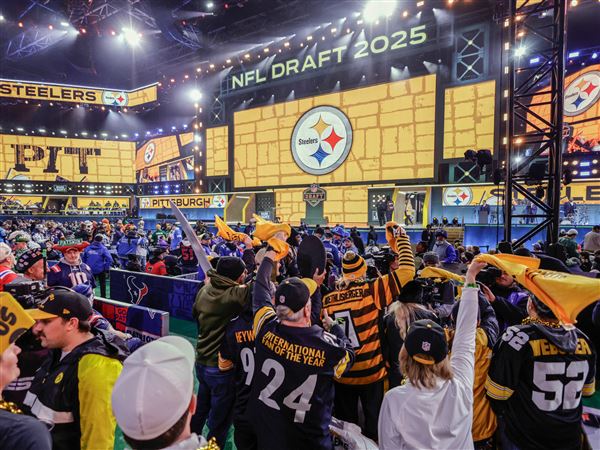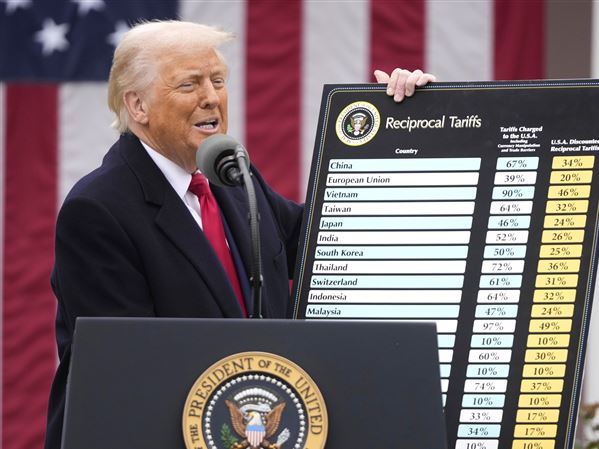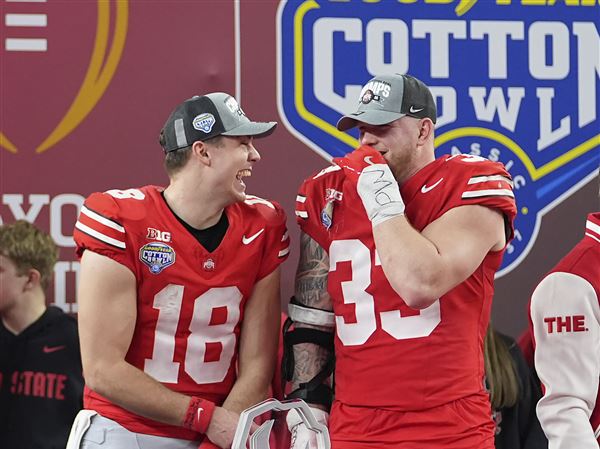When the Steelers beat the Ravens Sunday, Ben Roethlisberger and Hines Ward had another of their patented moments during the final drive.
The quarterback fired a low pass and the wide receiver slid and scooped the ball up just before it hit the turf.
In this case, the referees -- and the camera -- had a clear view of the play. But what if their vision had been obscured, even with the multiple camera angles of today's National Football League?
That's where Priya Narasimhan and her students think they might be able to help.
Dr. Narasimhan is a computer engineering professor at Carnegie Mellon University, and she and her students are equipping gloves and a football with remote sensing technology to measure everything from grip and trajectory to speed and position.
In the case of the Roethlisberger-Ward hookup on Sunday, the technology would ultimately be able to tell without doubt whether the ball was caught before it bounced off the ground.
It could also show such things as who actually has the ball in a pileup, whether a runner has crossed the goal line inside a mass of humanity and whether a receiver has control of the ball before he goes out of bounds.
Dr. Narasimhan teaches a course at Carnegie Mellon in "embedded real-time systems," which is a fancy way of describing the kind of touch sensors, GPS receivers and accelerometers that the students are putting to use.
But the football engineering project is not part of that course. Instead, it's a personal effort that grew out of the fact that Dr. Narasimhan, who grew up in India and Africa, found herself becoming a rabid Steelers fan after she moved to Pittsburgh seven years ago.
"When I moved here, I loved the people and their energy, and then I fell in love with football and I just started watching the Steelers and now, you can't get me out of the home on Sundays."
Impassioned as she was, she also found herself "throwing things at the TV many times when calls didn't go my way," and she began to wonder whether the wireless technology she was familiar with could help resolve some of those disputed decisions, as a further iteration of instant replay.
"You'd never want to replace the human referees because they make these calls based on years of experience, and no technology can replace that," she said. "But in addition to the instant replay, if you had a supplementary system that said this is exactly where the ball landed and where the player stopped with it, you could make these kinds of calls accurately."
So far, she and her squad of undergraduate and graduate students have focused on two things: gloves with touch sensors that can transmit that information wirelessly to a computer, and a football equipped with a global positioning receiver and accelerometer that can track the location, speed and trajectory of the ball.
Eventually, the same kind of sensors used in the gloves could be adapted to shoes, to measure stride and running patterns, or even shoulder pads, to calculate blocking positions and force.
The current version of the glove has 15 touch sensors on the fingers and palm, running to a wireless module on the back of the arm, said Adam Goldhammer of Richboro, Bucks County, a master's student in electrical engineering at Carnegie Mellon.
"Knowing these contact points can tell how a ball is being thrown and how different people throw," he said, "so you could train how someone is throwing to match how they should throw."
An animation on a computer screen shows which parts of the glove are in contact with the ball at any given time, symbolized by circles at the contact points.
The football the students are using is a regulation ball, but it's been partially unlaced and filled with couch cushion foam, said Aaron Harris, a junior mechanical engineering major from Los Angeles who briefly played cornerback for the Carnegie Mellon varsity squad.
The circuit board is nestled inside the foam, and Mr. Harris said his contribution to the project was to configure the battery so it maintained the ball's natural center of gravity and rotation.
The board contains a GPS unit, which gives the ball's three-dimensional position in space, and an accelerometer, which calculates its speed.
The current prototype transmits information once a second and is only accurate to within 30 feet -- obviously not good enough for practical application. A newer prototype, though, will transmit four times a second and will combine its data with information from fixed GPS receivers near the field to provide much tighter measurements.
Ultimately, Mr. Harris envisions the transmitter being suspended inside an inflated football by extendible rods that would project to the inside of the skin.
Dr. Narasimhan said she would love to work with a college or pro team to see what measurements and information would be of most help to them, but doesn't have such an arrangement yet.
And while she would be thrilled to see the technology used during a contest, she thinks its first practical application will be to help scout players.
"Suppose you've just lost your second-string quarterback. You'd love to be able to find out who can replace this person," she said. "In that case, you could have whoever you're scouting wear these gloves and you could ask, well, does he throw the same way under the same defensive schemes or does he run the same way and make the same kind of cuts as a terrific running back does?"
Michael Chuang, a doctoral student in electrical and computer engineering who is working on the project, hopes one day to add the readings from the equipment to the same visual display that shows the action taking place. "This would be the eye candy of the thing," he said.
"I actually have had people argue that I'm taking the joy out of the game" with the wireless technology idea, Dr. Narasimhan said, "but you could use this not only to train players ahead of time, but to train referees ahead of time" so they could make better calls.
By working on the project, students are learning a lot about the underlying science of embedded systems, she said.
But, she acknowledges, "It's a lot easier to recruit students when the project is football."
First Published: December 17, 2008, 10:00 a.m.

















